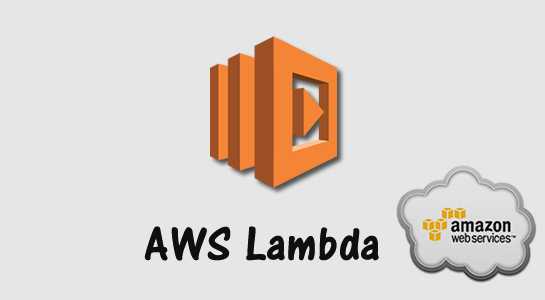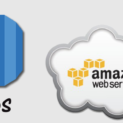Hope you are ready to give a kick off to this article series and I am about to start the AWS Lambda serverless compute. In the previous article, you have seen about an Overview of AWS(Amazon Web Services) and How does CI/CD works on AWS. Now, It’s time to understand the AWS Lambda.
What is AWS Lambda Serverless Compute:
AWS lambda is a code as service.It is basically microservices. AWS Lambda Serverless Compute is one the best service compare to any other service of the amazon.It is number one researched in the World and as a developer, it is very useful service for us.
What is Lambda?
Lambda is a simple to create Lambda function, no need to manage the computing platform.Also, AWS Lambda is a script creator and manager for AWS computing resources.
AWS lambda is a zero administration compute platform for backend developers that runs code in the AWS cloud.AWS Lambda is a compute service.You can set up AWS Lambda functions to respond to events asynchronously.
Let’s take some basic use cases where Lambda comes into the picture.Suppose you are running a scheduler for every application and Scheduler is taking backup of the file in regular intervals. If any user uploads an image, an image will be compressed, the thumbnail will be created so you can manage through the scheduler.
Now if you have a limited set of users like 12 or 15 users at that time, you can easily manage.But if you have more concurrent users like 500-1000 users, it would be easily handled through the AWS Lambda Serverless Compute, you can write image compression, thumbnail generation code in Lambda and keep it there and create an event which will perform the operation when to trigger through Lambda configuration.
So, Server resources will be used to perform other operation on images for all concurrent users, You can manage all thing through Lambda, if you have 500 users, 500 lambdas will be used. It will dynamically use the compute resources, RAM and required amount of space, CPU and once everything was done, release the resources which can save your resources, server cost, maintenance cost etc.
AWS Lambda can use as follows:
As an event-driven compute service where AWS Lambda runs code in response to events like change data in an Amazon S3 bucket or an Amazon dynamoDB table.
As a compute service to run your code in response to HTTP requests using Amazon API Gateway or API calls made using AWS SDKs.
Programming languages AWS Lambda support:
AWS Lambda is CAAS (Code as a Service) where no need to host your code, no need to give specific hardware, Lambda will decide hardware at the runtime and compute the code. It will never down and if your server is down, it will be handled through microservices.
AWS Lambda supports following languages.
- Node Js (JavaScript)
- Python
- Java(Java 8 compatible)
You can set email, SMS and push notification etc you want to set up through lambda.
Where is AWS Lambda running code?
AWS Lambda runs your backend code on its own AWS compute fleet of amazon Elastic compute cloud(EC2) instances across multiple availability zones in regions, providing the high availability, security, performance and scalability of AWS infrastructure.
What are the Benefits of AWS Lambda?
AWS Lambda has many benefits but we will discuss few of them:
Serverless
AWS Lambda provides the serverless deployment technology. You can use the AWS Lambda to create a serverless schedule.AWS Lambda function is a stateless service which handles requests by invoking AWS services.
Event Driven
AWS Lambda provides the Event-Driven Data Management for Microservices.Event-driven workflows for event-driven automation products.Event-driven automation also allows for easier management of computing resources at a scale.
No need to configure the server and automatically handles load balancing, auto scaling, resource utilization memory management due to the Event Driven service.
Sub Second Billing:
AWS Lambda only charged you for what you use.Charges of AWS Lambda based on the number of requests for your functions and the time your code executes.AWS Lambda provides free tier for 1M free requests per month and 400,000 GB-seconds of compute time per month.
How AWS Lambda Works?
- Authoring: Authoring Lambda Functions Using Eclipse IDE and AWS SDK Plugin.
- Stateless: AWS Lambda works on stateless development.
- Development: AWS Lambda allows developers to write code that triggers automatically to events.
- Monitoring and Logging : AWS Lambda automatically monitors Lambda functions and reporting metrics through Amazon CloudWatch.it helps to monitor you code executes.AWS Lambda automatically tracks the number of requests, the latency per request, and the number of requests resulting in an error etc.
Which services are integrated with AWS Lambda?
- S3
- DynamoDB
- Kinesis
- CloudFormation
- SWF
- CloudTrail
- SES
- SWF
- Cognito
- API Gateway
- SNS
- CloudWatch
How long can an AWS Lambda function execute?
It takes Minimum 1 seconds and maximum 300 seconds and it defaults timeout is 3 seconds, but you can set the timeout to any value between 1 and 300 seconds.The memory size you select for your Lambda functions determines how long functions can run in the free tier.
Here, I am ending the article, but this is not the end of AWS Services Topic. I will share more services very soon.Well, that’s it. I hope at least someone will benefit from this article.Do share this article with your friends to let them know about AWS services.




















Comments (2)